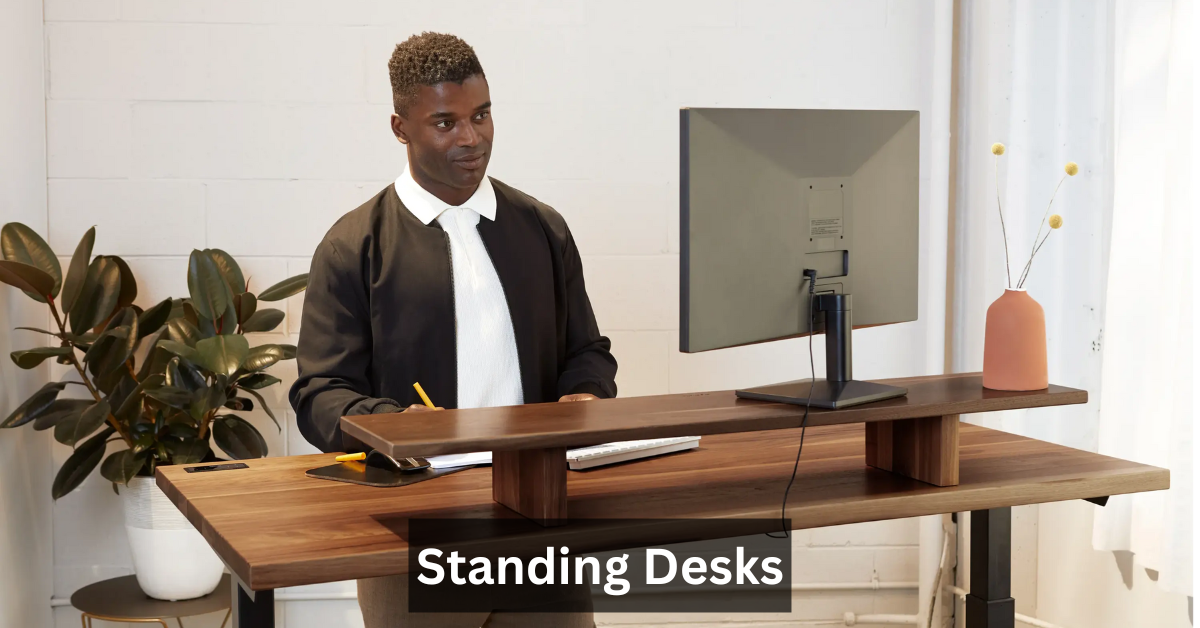Standing Desks are innovative workstations designed to allow users to work comfortably while standing, or to alternate between standing and sitting. These desks are also commonly referred to as sit-stand desks or height-adjustable desks, and they have gained immense popularity in both home offices and corporate environments. As more people become aware of the negative impacts of sedentary behavior, Standing Desks have emerged as a proactive solution for improving health and productivity. With features ranging from manual crank adjustments to motorized height control, Standing Desks are tailored to support ergonomic working habits and healthier lifestyles.
The modern workforce is spending more time than ever at desks, often seated for eight hours or more each day. This sedentary lifestyle contributes to numerous health issues, including obesity, cardiovascular problems, and musculoskeletal discomfort. Standing Desks offer an effective way to combat these challenges by encouraging movement throughout the day. When used properly, Standing Desks promote better posture, reduce physical discomfort, and support higher levels of alertness and energy. Whether you work in an office, a co-working space, or remotely from home, incorporating Standing Desks into your daily routine is a proven way to enhance overall well-being and performance.
Health Benefits of Standing Desks
Improved Posture and Spinal Alignment
One of the most significant advantages of Standing Desks is their ability to promote better posture. Traditional desks often cause users to hunch over their computers, leading to chronic neck and back pain. By using Standing Desks with proper ergonomic configuration, users naturally adopt an upright position, reducing the strain on the spine and neck muscles. The consistent use of Standing Desks can lead to long-term improvements in spinal health, preventing the development of posture-related conditions.
Reduced Risk of Chronic Diseases
Standing Desks also play a vital role in reducing the risk of serious health conditions. Prolonged sitting has been linked to increased risks of Type 2 diabetes, heart disease, and even certain types of cancer. Standing Desks encourage light activity, which helps regulate blood sugar levels, improve circulation, and prevent weight gain. By simply alternating between sitting and standing, users can significantly reduce the negative impact of a sedentary lifestyle.
Boosted Energy and Mental Focus
Using Standing Desks can also lead to improved energy levels and mental clarity. Standing engages more muscle groups, which increases circulation and oxygen flow to the brain. Many users report feeling more alert and productive when working at a standing desk. This mental boost is especially beneficial in high-focus environments, such as programming, writing, or administrative tasks. In workplaces where productivity is key, Standing Desks have been shown to reduce fatigue and improve performance.
Exploring the Types of Standing Desks
Fixed Height Standing Desks
Fixed-height Standing Desks are designed for users who prefer to work while standing all the time. These models do not adjust in height, which means they are best suited for individuals who do not need to switch between sitting and standing positions. They are generally more affordable and stable, but offer less flexibility than adjustable versions.
Manual Height Adjustable Desks
Manual Standing Desks allow users to adjust the height using a hand crank or mechanical lever. These desks are more budget-friendly than electric models and are great for users who don’t mind making manual adjustments. While they require more effort to operate, they offer good functionality for most office tasks.
Electric Standing Desks
Electric Standing Desks are the most advanced type, featuring motorized mechanisms that allow for seamless height adjustments at the push of a button. These desks often come with memory presets, allowing users to switch between preferred sitting and standing heights easily. They’re ideal for busy professionals looking for convenience, smooth transitions, and precision in their workspace setup.
Standing Desk Converters
For those not ready to replace their entire workstation, standing desk converters offer a practical solution. These devices sit atop an existing desk and can be raised or lowered to accommodate standing or sitting. Converters are perfect for individuals who want the benefits of Standing Desks without investing in a whole new piece of furniture.
Ergonomic Setup Tips for Standing Desks
Monitor and Keyboard Placement
When using Standing Desks, it’s essential to set up your monitor at eye level and your keyboard at elbow height. This minimizes strain on your neck, shoulders, and wrists. An ergonomic setup ensures that you’re not trading one set of problems (from sitting) for another (from poor standing posture).
Anti-Fatigue Mats and Footwear
Standing for extended periods can be taxing on your feet and joints. Anti-fatigue mats are specially designed to provide cushioning and support, making long-standing sessions more comfortable. Additionally, wearing supportive shoes while using Standing Desks can help reduce discomfort and prevent injuries.
Alternating Between Sitting and Standing
Even with Standing Desks, it’s important not to stand all day. Experts recommend alternating between sitting and standing every 30–60 minutes. This balanced approach reduces fatigue and allows the body to recover while still reaping the health benefits associated with Standing Desks.
Popular Standing Desk Brands and Options
Uplift Desk
Known for durability and functionality, Uplift Desk offers a wide range of electric Standing Desks with premium finishes and accessories.
FlexiSpot
FlexiSpot combines affordability with high-end features. Their desks are popular in home office setups for their space-saving designs and ease of use.
VariDesk
VariDesk is a pioneer in the standing desk converter market. Their products are built with ergonomic principles and come pre-assembled for instant use.
Autonomous SmartDesk
Autonomous offers AI-powered Standing Desks with programmable settings and sleek, modern designs, making them a favorite among tech-savvy professionals.
IKEA Skarsta
IKEA Skarsta is a manual standing desk with minimalist aesthetics. It’s a great entry-level option for those who want the benefits of Standing Desks without a large financial investment.
Common Mistakes to Avoid When Using Standing Desks
Standing Too Long Without Movement
While standing is better than sitting for extended periods, remaining static in any position can be harmful. Make sure to shift weight, stretch, and take walking breaks to avoid fatigue and improve circulation.
Ignoring Ergonomics
Improper positioning of monitors, keyboards, and accessories can lead to discomfort and strain. Always ensure your standing desk is set up ergonomically to maximize benefits and minimize risks.
Transitioning Too Quickly
For those new to Standing Desks, transitioning from full-time sitting to frequent standing can be challenging. Start with short intervals and gradually increase standing time to allow your body to adapt.
Conclusion
Standing Desks have transformed the way people work, blending ergonomic science with workplace efficiency. Whether you choose a manual, electric, or converter model, incorporating Standing Desks into your routine offers a wide array of physical and mental benefits. With the proper setup and mindful usage, Standing Desks can reduce pain, boost productivity, and contribute to a healthier work-life experience. For anyone seeking a smarter, more active workspace, Standing Desks are not just worth it — they’re essential.
Frequently Asked Questions
Are Standing Desks Really Effective?
Yes, numerous studies show that Standing Desks help reduce the health risks associated with sedentary behavior while promoting better posture and increased energy.
How Long Should You Stand While Working?
Experts recommend standing for about 15–30 minutes every hour. The key is balance—alternating between standing and sitting for optimal comfort and productivity.
Do Standing Desks Help You Lose Weight?
Standing alone won’t replace exercise, but it does help burn more calories than sitting and can support weight management as part of an active lifestyle.
Are Standing Desks Good for Kids or Students?
Yes. Height-adjustable Standing Desks for kids can improve focus and encourage movement in learning environments, which is especially helpful in remote learning scenarios.
Stay in touch to get more updates & alerts on Erome! Thank you



